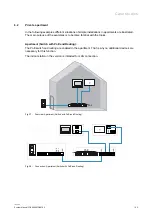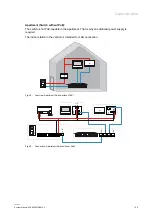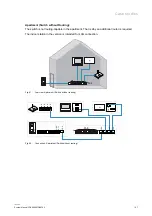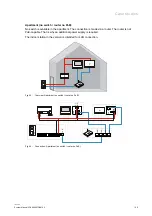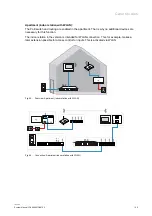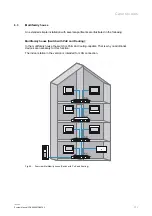
Information about planning and application
System Manual 2CKA000073B9795
│56
5.2
Network / Data transmission
5.2.1
Ethernet cable / Ethernet network
Attention! - Malfunctions
There is the danger of device malfunction if the network cables are not correctly
installed.
– The installation of the network cables must comply with DIN EN 50173.
Ethernet is the standard for the IP-based, cable-bound data transmission. It defines the
requirements for cables and plugs. It also defines different protocols for data transmission.
Ethernet is possible both via twisted pair cable (copper cables) and also as OWG (glass fibre).
The connection to ABB-Welcome IPdevices is made via twisted pair cables of category 5 or
higher with RJ-45 plugs.
Cabling according to DIN EN 50173
The European standard DIN EN 50173 "Information Technology - Generic Communication
Cabling Systems" describes general requirements of the structure and components of cable-
bound networks. It represents recognised regulations of technology. In contrast to demand-
oriented cabling, here the structure of a general network that meets all requirements also in the
long term is aimed at.
The cabling is divided into the areas of site cabling (primary area), vertical storey cabling
(secondary area) and horizontal storey cabling (tertiary area). The areas can be planned and
installed independent of each other.
The site cabling is the networking between different buildings. From here the net is distributed to
the individual storeys via the vertical storey cabling. The individual connecting sockets are
finally reached via the horizontal storey cabling to which the terminal devices are connected via
patch cables.
In individual cases it is to be decided at which point sub-distributions are actually to be set up
and how they are to be linked together. Each additional distribution node in the path between
two devices increases the latency period and the probability of failure. In addition, bundling
results in higher demands made on the transmission rate between adjacent nodes. That is why
a star topology is to be generally preferred for which, if possible, all devices are connected
directly to the main distribution point. For multifamily houses again it is practical to equip each
apartment with its own distribution.
























